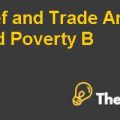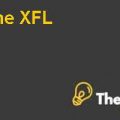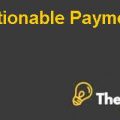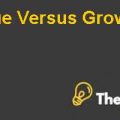
Q#01: Look at the market value of the company’s debt and equity share over the past 3 years.
a) Have they changed much?
Answer:
By taking into consideration the statement of financial position of Procter & Gamble in the past three years,the variation can be seen in the market value of debt and equity’s share. However, the in monetary terms, it can be seen that the market value of equity shows variation in its value. It can be seen that in the past three years the value of equity was showing an increasing trend because in 2012, the value based on shareholders’ equity was 63.44 billion however,in 2014 it exceeded 69.21 billion.
Hence, it showed a change of almost 10.00%. Therefore, it can be mentioned that the changed is not very significant. Despite this, in percentage terms as in 2012 the market value of equity was 48.00% and in 2013, the market value of equity was 49.00%. Lastly, in 2014, the market value of equity was also 48.00%.
Therefore, in percentage terms itre presents that there is almost no change in the market value of equity. Apart from that, by taking account of the market value of debt in monetary terms, the value of debt was 68.21 billion in 2012 and it increased to 74.29 billion in 2014(Stock analysis on net, n.d.).
Hence, this shows an increase of almost 9.00% and this is not a significant change again. On the other hand, the market value of debt as per the exhibits is 52.00% in 2012 and it reduced by 1.00% in 2013 and the percentage turned out to be 51.00%. Also, in the fiscal year 2014, the percentage also remained fixed at 51.00%.
Hence, the market values of both the equity and debt did not change much in the past three years and it can be seen from the exhibits.
b) How do you handle short term debt, the net vs. gross debt and the leasing’s?
Answer:
Short term debt is usually used for the funding of financial commitments. Hence, in order to meet these commitments, there is a need that Procter & Gamble should have resources in order to settle the liabilities.
Moreover, the enterprise should take into account that there is no need to eliminate the debt completely, but to handle the short term debt accordingly. It can make use of retained earnings in order to pay the liabilities and the enterprise should also have sufficient amount of cash in order to avoid any sort of hurdle and to maintain its reputation.
Furthermore, net debt is generally the type of debt that mainly consists of debt and it is held by the general public. Despite this, it has a great importance for the purpose of understanding the market in a short period of time.
Apart from this, those securities that have been issued by the treasury to the SSA are not counted in net debt. The reason behind this is that the debt that has been issued by the treasury is normally offset by the asset, which is held by SSA.
The net debt can be handled by taking account the interest rates because they normally affect the net debt and it may also have the ability to crowd out other investments. Apart from this, the gross debt is mainly comprised of the stock of outstanding debt related to the government.
The gross debt can be managed in the same way by having sufficient profits and savings in the company’s account. Generally, leasing can be availed via outsourcing or it can be managed internally. However, for the leasing, the management needs the extraction of the information that is available in the leasing agreement document, respectively.
Once the time period for the lease starts, thereafter there will be a need to manage and monitor the payments that are related to the rental payments.
From here on suppose that the debt to equity ratio had been constant over the past year. Also suppose that the corporate tax rate was fixed. What was it?
Answer:
It is assumed that the debt to equity ratio remains the same almost in the past three years, which is already mentioned in the exhibits. The debt to equity ratio is assumed to be constant in the past three years, both related to the equity and debt.
However, the percentage that has been assumed is equal to 50.00%. Despite this, the corporate tax rate is supposed to be 23.90% as per the exhibits. This percentage is taken from a website and after that the average corporate tax rate has been calculated based on the last three fiscal years, which include 2012, 2013 and 2014(Market watch, n.d.).......................










